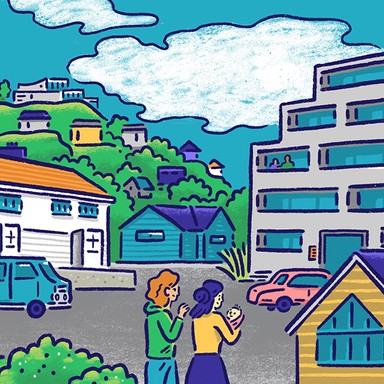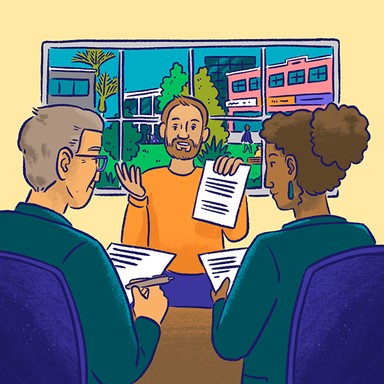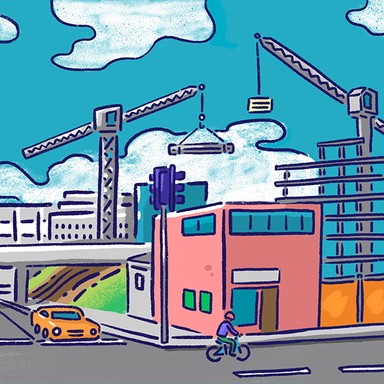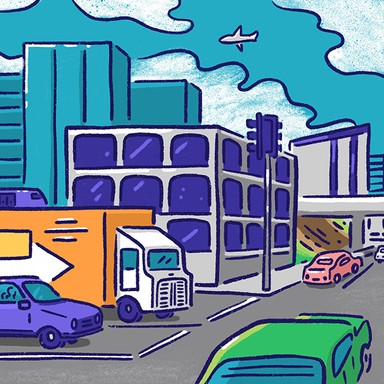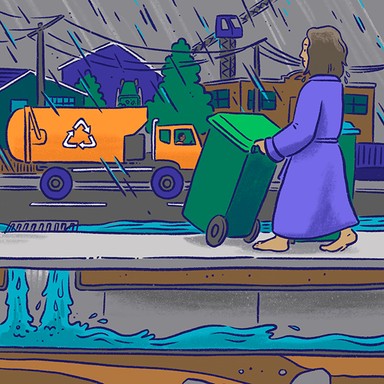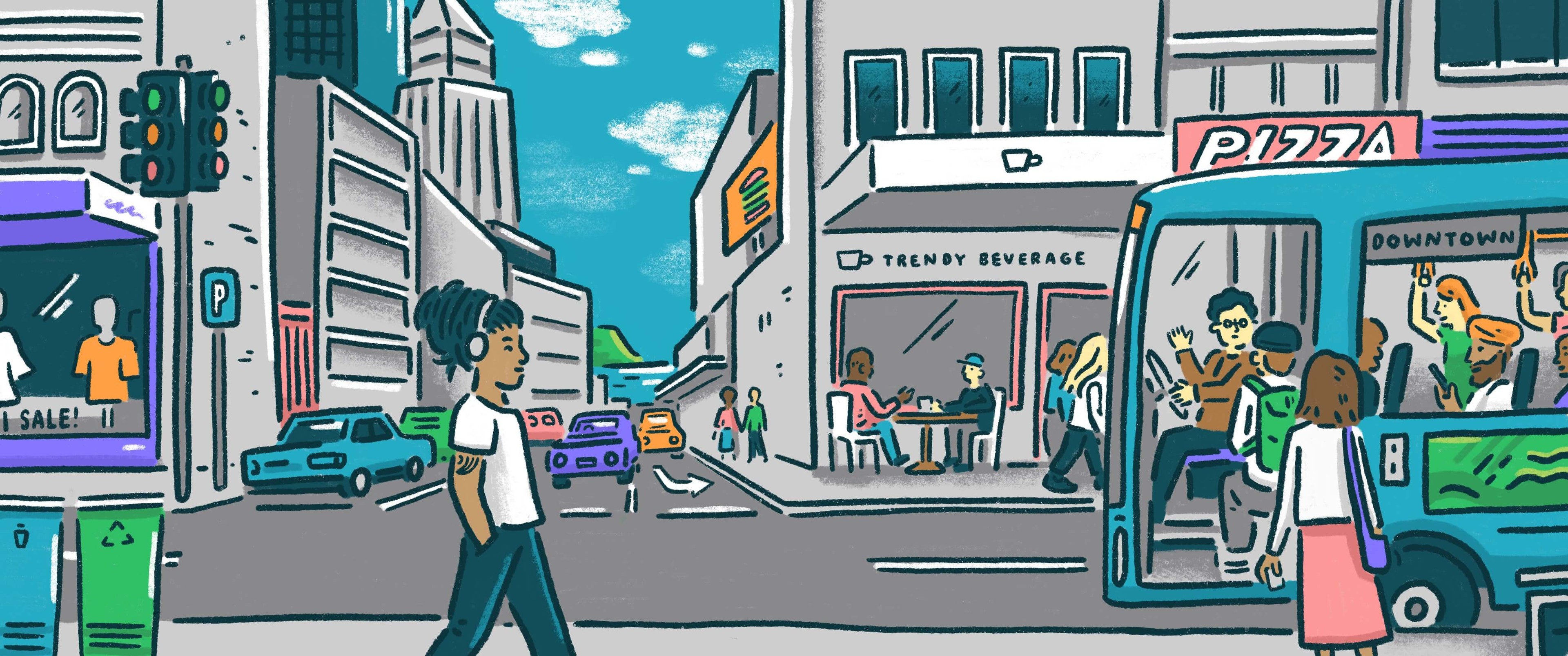
Invercargill City Council

Climate change and resilience
Climate change poses a huge challenge for communities as more frequent extreme weather events require us to rethink how we live and where. Local authorities are at the forefront of efforts to respond, with responsibilities for environmental planning and regulation, as well as civil defence. Many councils have plans to reduce emissions in their area and are working to help their communities adapt to a warming world.

Climate change and resilience
Climate change poses a huge challenge for communities as more frequent extreme weather events require us to rethink how we live and where. Local authorities are at the forefront of efforts to respond, with responsibilities for environmental planning and regulation, as well as civil defence. Many councils have plans to reduce emissions in their area and are working to help their communities adapt to a warming world.
Commit council to adapt for climate change risk such as flood management, water resources, planning, building regulations, and transport.
Investigate costs of climate change and risks from natural hazards, as well as reducing greenhouse gas emission and offsets.
Commit council to review our civil defence emergency management resources for climate change risks adaption.
Commit to a robust earthquake strengthen policy to protect ageing city assets and the fibre of what is Invercargill.
Commit to flood protection, especially on the estuary area, to safeguard houses and businesses in low lying areas of the city.
Promote a srategic plan to prepare the city for the slow but steady changes in climate the region is and will be facing in the future,
Earthquake strengthening heritage buildings.
Prioritising climate change mitigations in the next Long Term Plan.
Continue to argue for water tanks on individual properties.
Focus on earthquake strengthening and retaining our character heritage buildings.
Commit to developing climate change and mitigation action plans.
Increase resilience. This should be the council's top climate change priority, council must make best use of resources available.
Identify any existing infrastructure vulnerable to climate change and prioritise how its best managed in the future.
Commit council to providing climate mitigation action plans, also provide reassuring future certainty via community groups and unite everyone.
Commit council to actioning climate mitigation plans expediently, in a timely manner with tolerance, support people to understand and adapt.
Commit council to creating kaitiaki-stewardship networks, which unites everyone to advance environmental stewardship and clean technologies.
Commit to reduction in greenhouse gas emissions, including the use of electric vehicles where feasible and economical.
Consider climate change in planning documents, including protection of low lying areas from sea level rise.
Improve resilience to natural disasters when planning asset renewals.
Endeavour to reduce greenhouse gas emissions and adapt to climate change but not at a high cost or major effect to our economy.
Continue to support civil defence but insist we have test scenarios that affect everyone and ensure we provide useful information.
Reduce focus on earthquake strengthening and allow people to choose if they wish to enter an unsafe building by enforcing status signage.
Ensure that flood protection is suitable for increasing high rainfall events work with key agencies to be prepared.
Review the city's carbon footprint and implement steps to reduce carbon. Need to ensure actions are economically and socially sustainable.
Implement pragmatic solutions for buildings to ensure risk is properly understood and they are safe.
Commit to the use of hybrid and electric cars by council.
Encourage the development of safe cycle lanes within the city to support bikers and e-bikers.
Ensure all plans reflect the desire to reduce greenhouse gas emissions.
Commit council to adapt for climate change risk such as flood management, water resources, planning, building regulations, and transport.
Investigate costs of climate change and risks from natural hazards, as well as reducing greenhouse gas emission and offsets.
Commit council to review our civil defence emergency management resources for climate change risks adaption.
Commit to a robust earthquake strengthen policy to protect ageing city assets and the fibre of what is Invercargill.
Commit to flood protection, especially on the estuary area, to safeguard houses and businesses in low lying areas of the city.
Promote a srategic plan to prepare the city for the slow but steady changes in climate the region is and will be facing in the future,
Earthquake strengthening heritage buildings.
Prioritising climate change mitigations in the next Long Term Plan.
Continue to argue for water tanks on individual properties.
Focus on earthquake strengthening and retaining our character heritage buildings.
Commit to developing climate change and mitigation action plans.
Increase resilience. This should be the council's top climate change priority, council must make best use of resources available.
Identify any existing infrastructure vulnerable to climate change and prioritise how its best managed in the future.
Commit council to providing climate mitigation action plans, also provide reassuring future certainty via community groups and unite everyone.
Commit council to actioning climate mitigation plans expediently, in a timely manner with tolerance, support people to understand and adapt.
Commit council to creating kaitiaki-stewardship networks, which unites everyone to advance environmental stewardship and clean technologies.
Commit to reduction in greenhouse gas emissions, including the use of electric vehicles where feasible and economical.
Consider climate change in planning documents, including protection of low lying areas from sea level rise.
Improve resilience to natural disasters when planning asset renewals.
Endeavour to reduce greenhouse gas emissions and adapt to climate change but not at a high cost or major effect to our economy.
Continue to support civil defence but insist we have test scenarios that affect everyone and ensure we provide useful information.
Reduce focus on earthquake strengthening and allow people to choose if they wish to enter an unsafe building by enforcing status signage.
Ensure that flood protection is suitable for increasing high rainfall events work with key agencies to be prepared.
Review the city's carbon footprint and implement steps to reduce carbon. Need to ensure actions are economically and socially sustainable.
Implement pragmatic solutions for buildings to ensure risk is properly understood and they are safe.
Commit to the use of hybrid and electric cars by council.
Encourage the development of safe cycle lanes within the city to support bikers and e-bikers.
Ensure all plans reflect the desire to reduce greenhouse gas emissions.
Mayor
Compare the mayoral candidates in your area
Local council
Compare the candidates for your city or district council
Regional council
Compare the candidates for your regional council
Local board
Compare the candidates for your local or community board

